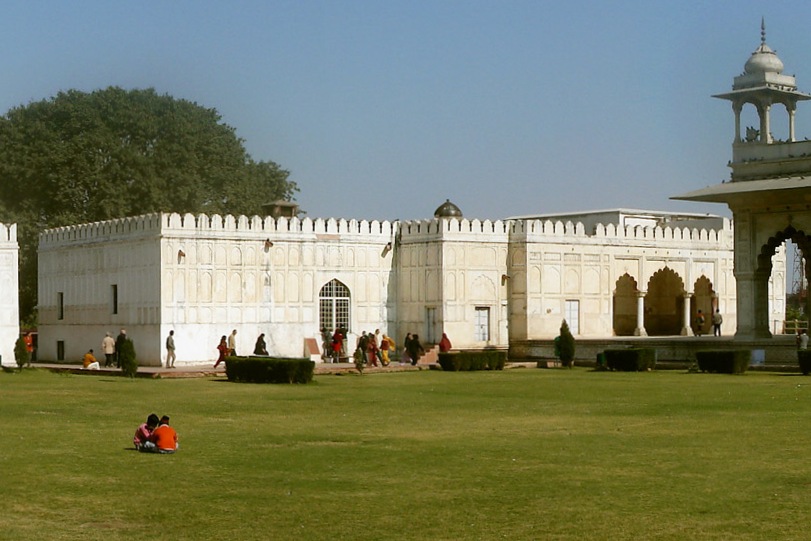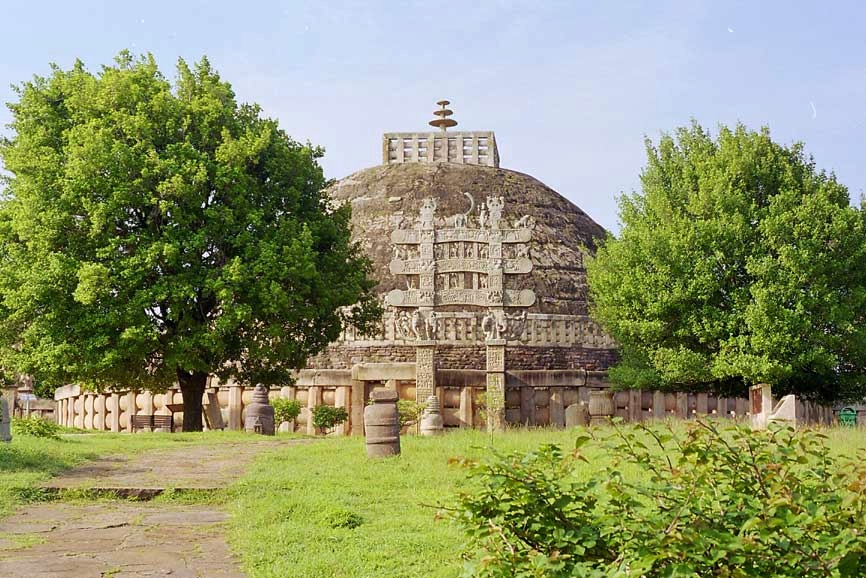|
Hammam-e-Qadimi
Hammam-e-Qadimi (Urdu: , hi, हम्माम-ए-क़दीमी) is a functional 18th century Turkish bath in Bhopal, India. Erected in the early 1700s during the rule of the Gonds, Hammam-e-Qadimi was gifted to Hajjam Hammu Khalida when Dost Mohammad Khan became Nawab of the city. The Indo-Turkish bath is owned by a descendant of Hajjam Hammu Khalida, Mohammad Sajid, and has been kept in his family for five generations. The oil used for the massages offered in Hammam-e-Qadimi is a special recipe of Sajid's family. Hammam-e-Qadimi was built in the style of the Çemberlitaş Hamamı of Istanbul and was constructed near a mosque so that individuals visiting the mosque may perform their ablutions before going there to pray. Sanchari Pal describes the interior of Hammam-e-Qadimi: See also *Tourism in Madhya Pradesh *Hammam (Red Fort) The Hammam-e-Lal Qila ( ur, حمامِ لال قلعہ , hi, हम्माम-ए-लाल क़िला) is the Turkish bath ... [...More Info...] [...Related Items...] OR: [Wikipedia] [Google] [Baidu] |
Çemberlitaş Hamamı
The Çemberlitaş Hamamı is a historical Turkish bath ( tr, hamam) that was built beside Divan Yolu, a processional road dating back to the Byzantine Era that once led to Rome,Ergin, Nina. “Bathing Business in Istanbul: A Case Study of the Cemberlitas Hamami in the Seventeenth and Eighteenth Centuries.” ''Bathing Culture of Anatolian Civilizations: Architecture, History, and Imagination'', Peeters, 2011, pp. 142–169. in the Çemberlitaş neighbourhood of Istanbul, Turkey. Often attributed to Mimar Sinan, it was constructed in 1584. The hamam is close to the Çemberlitaş stop on the T1 tramline. History Construction and history The Çemberlitaş Hamamı was commissioned by Nurbanu Sultan, the head of the Ottoman imperial harem after the death of her second husband Selim II. After his death, her first son ascended to the throne and she held the title 'Mother of the Sultan'. She was responsible for guarding the royal family and was able to exercise administrative cont ... [...More Info...] [...Related Items...] OR: [Wikipedia] [Google] [Baidu] |
Turkish Bath
A hammam ( ar, حمّام, translit=ḥammām, tr, hamam) or Turkish bath is a type of steam bath or a place of public bathing associated with the Islamic world. It is a prominent feature in the culture of the Muslim world and was inherited from the model of the Roman ''thermae.'' Muslim bathhouses or hammams were historically found across the Middle East, North Africa, al-Andalus (Islamic Spain and Portugal), Central Asia, the Indian subcontinent, and in Southeastern Europe under Ottoman rule. A variation on the Muslim bathhouse, the Victorian Turkish bath, became popular as a form of therapy, a method of cleansing, and a place for relaxation during the Victorian era, rapidly spreading through the British Empire, the United States of America, and Western Europe. In Islamic cultures the significance of the hammam was both religious and civic: it provided for the needs of ritual ablutions but also provided for general hygiene in an era before private plumbing and served other ... [...More Info...] [...Related Items...] OR: [Wikipedia] [Google] [Baidu] |
Hammam (Red Fort)
The Hammam-e-Lal Qila ( ur, حمامِ لال قلعہ , hi, हम्माम-ए-लाल क़िला) is the Turkish bath located in the Red Fort The Red Fort or Lal Qila () is a historic fort in Old Delhi, Delhi in India that served as the main residence of the Mughal Emperors. Emperor Shah Jahan commissioned construction of the Red Fort on 12 May 1638, when he decided to shift ... in Delhi and served as the bathing area of the Mughal Indian emperor. It is located in the north of the '' Diwan-i-Khas''. The marble ''hammam'' is a bath that forms a part of the palace building. It consists of three apartments separated by corridors and crowned with domes. The apartments are illuminated by a colored glass skylight. The two rooms to either side of the present entrance are believed to have been used by the royal children for bathing. The eastern apartment, containing three fountain basins, was used primarily as a dressing room. In the center of each room sto ... [...More Info...] [...Related Items...] OR: [Wikipedia] [Google] [Baidu] |
Bhopal
Bhopal (; ) is the capital city of the Indian state of Madhya Pradesh and the administrative headquarters of both Bhopal district and Bhopal division. It is known as the ''City of Lakes'' due to its various natural and artificial lakes. It is also one of the greenest cities in India. It is the 16th largest city in India and 131st in the world. After the formation of Madhya Pradesh, Bhopal was part of the Sehore district. It was bifurcated in 1972 and a new district, Bhopal, was formed. Flourishing around 1707, the city was the capital of the former Bhopal State, a princely state of the British ruled by the Nawabs of Bhopal. Numerous heritage structures from this period include the Taj-ul-Masajid and Taj Mahal palace. In 1984, the city was struck by the Bhopal disaster, one of the worst industrial disasters in history. Bhopal has a strong economic base with numerous large and medium industries operating in and around the city. Bhopal is considered as one of the important fin ... [...More Info...] [...Related Items...] OR: [Wikipedia] [Google] [Baidu] |
Tourism In Madhya Pradesh
Tourism in Madhya Pradesh has been an attraction of India because of its location in the centre of the country. Madhya Pradesh has won Best Tourism State National award for 3 consecutive years i.e. 2017, 2016 and 2015. Natural environment The natural environment of Madhya Pradesh is varied. Consisting largely of a plateau streaked with the mountain ranges of the Vindhyas and the Satpuras, the hills give rise to the main river system - Narmada and the Tapti, running from east to west, and the Chambal, Sone, Betwa, Mahanadi west to east. One half of the state is forested and offers a unique panorama of wildlife. In the National Parks of Kanha, Bandhavgarh, Shivpuri and many others visitors have the opportunity to see the tiger, the bison and a wide variety of deer and antelope in natural surroundings. World heritage sites Although the modern state of Madhya Pradesh came into being in 1956, its cultural heritage is ancient and chequered. Innumerable monuments, exquisite ... [...More Info...] [...Related Items...] OR: [Wikipedia] [Google] [Baidu] |
The Asian Age
''The Asian Age'' is an English-language Indian daily newspaper with editions published in Delhi, Mumbai and Kolkata. It also prints an "international edition" in London. It was launched in February 1994. The same publishing company also produces the ''Deccan Chronicle''. See also *M. J. Akbar, founder and erstwhile editor-in-chief of ''The Asian Age'' until 2013. * T. Venkattram Reddy, editor-in-chief appointed in 2013. *Seema Mustafa Seema Mustafa (born 20 April 1955) is an Indian print and television journalist. She is currently the Editor-in-Chief of The Citizen, a digital newspaper she founded. She is the elected president of the Editors Guild of India, since 16 October 20 ..., erstwhile resident editor and bureau chief of ''The Asian Age''. References External links * ''Asian Age'' ePaper [...More Info...] [...Related Items...] OR: [Wikipedia] [Google] [Baidu] |
Wudu
Wuḍūʾ ( ar, الوضوء ' ) is the Islamic procedure for cleansing parts of the body, a type of ritual purification, or ablution. The 4 Fardh (Mandatory) acts of ''Wudu'' consists of washing the face, arms, then wiping the head and the feet with water. Wudu is an important part of ritual purity in Islam. It is governed by ''fiqh'' (Islamic jurisprudence), which specifies rules concerning hygiene and defines the rituals that constitute it. It is typically performed before prayers ('' salah or salat''). Activities that invalidate ''wudu'' include urination, defecation, flatulence, deep sleep, light bleeding, menstruation, postpartum and sexual intercourse. ''Wudu'' is often translated as 'partial ablution', as opposed to '' ghusl'' as 'full ablution' where the whole body is washed. It also contrasts with ''tayammum'' ('dry ablution'), which uses sand or dust in place of water, principally due to water scarcity or other harmful effects on the person. Purification of the bod ... [...More Info...] [...Related Items...] OR: [Wikipedia] [Google] [Baidu] |
Istanbul
Istanbul ( , ; tr, İstanbul ), formerly known as Constantinople ( grc-gre, Κωνσταντινούπολις; la, Constantinopolis), is the List of largest cities and towns in Turkey, largest city in Turkey, serving as the country's economic, cultural and historic hub. The city straddles the Bosporus strait, lying in both Europe and Asia, and has a population of over 15 million residents, comprising 19% of the population of Turkey. Istanbul is the list of European cities by population within city limits, most populous European city, and the world's List of largest cities, 15th-largest city. The city was founded as Byzantium ( grc-gre, Βυζάντιον, ) in the 7th century BCE by Ancient Greece, Greek settlers from Megara. In 330 CE, the Roman emperor Constantine the Great made it his imperial capital, renaming it first as New Rome ( grc-gre, Νέα Ῥώμη, ; la, Nova Roma) and then as Constantinople () after himself. The city grew in size and influence, eventually becom ... [...More Info...] [...Related Items...] OR: [Wikipedia] [Google] [Baidu] |
Nawab
Nawab (Balochi language, Balochi: نواب; ar, نواب; bn, নবাব/নওয়াব; hi, नवाब; Punjabi language, Punjabi : ਨਵਾਬ; Persian language, Persian, Punjabi language, Punjabi , Sindhi language, Sindhi, Urdu: ), also spelled Nawaab, Navaab, Navab, Nowab, Nabob, Nawaabshah, Nawabshah or Nobab, is a Royal title indicating a sovereign ruler, often of a South Asian state, in many ways comparable to the western title of Prince. The relationship of a Nawab to the Emperor of India has been compared to that of the Kingdom of Saxony, Kings of Saxony to the German Emperor. In earlier times the title was ratified and bestowed by the reigning Mughal emperor to semi-autonomous Muslim rulers of subdivisions or princely states in the Indian subcontinent loyal to the Mughal Empire, for example the Nawabs of Bengal. The title is common among Muslim rulers of South Asia as an equivalent to the title Maharaja. "Nawab" usually refers to males and literally mea ... [...More Info...] [...Related Items...] OR: [Wikipedia] [Google] [Baidu] |
India Today
''India Today'' is a weekly Indian English-language news magazine published by Living Media India Limited. It is the most widely circulated magazine in India, with a readership of close to 8 million. In 2014, ''India Today'' launched a new online opinion-orientated site called the ''DailyO''. History ''India Today'' was established in 1975 by Vidya Vilas Purie (owner of Thompson Press), with his daughter Madhu Trehan as its editor and his son Aroon Purie as its publisher.Bhandare, Namita"70's: The decade of innocence".''Hindustan Times''. Retrieved 29 July 2012. At present, ''India Today'' is also published in Hindi, Tamil, Malayalam and Telugu Telugu may refer to: * Telugu language, a major Dravidian language of India *Telugu people, an ethno-linguistic group of India * Telugu script, used to write the Telugu language ** Telugu (Unicode block), a block of Telugu characters in Unicode S .... The India Today news channel was launched on 22 May 2015. In October 2017, Aroon P ... [...More Info...] [...Related Items...] OR: [Wikipedia] [Google] [Baidu] |
.jpg)





